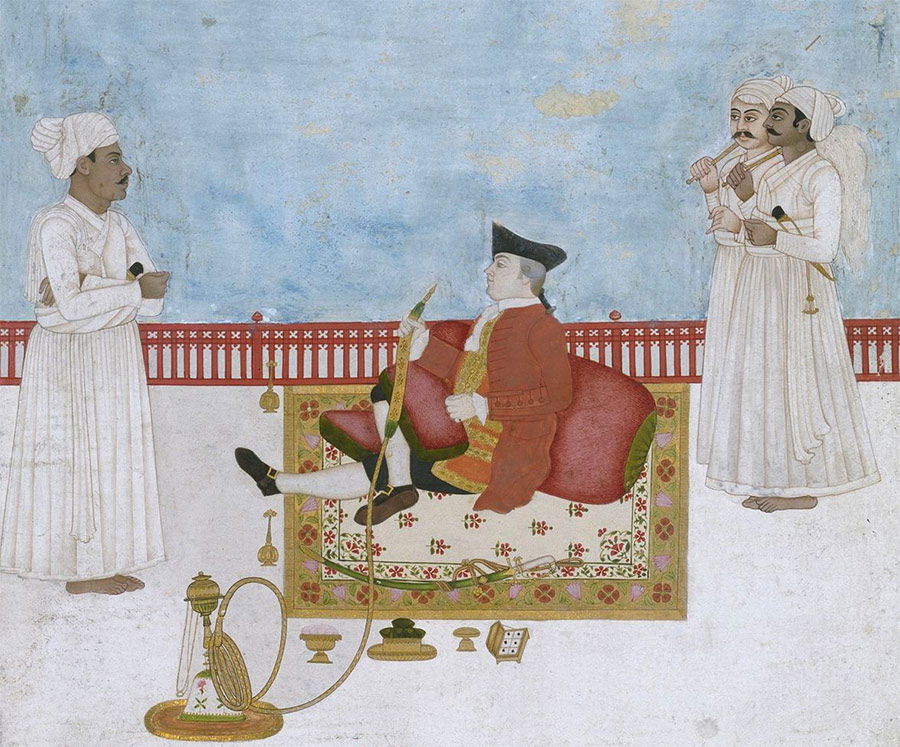What the British Did to India
A persuasively argued but one-sided account of the economic and political failings of British rule in India.

In 1700, India, then ruled by the Mughal Emperor Aurangzeb, an autocratic religious zealot, boasted 24.4 per cent of global GDP: a share almost equal to that of Europe’s 25 per cent. By 1950, as India became a secular democracy, its share had dropped to just over three per cent. In the intervening period the subcontinent had been ruled by outsiders, namely, the British East India Company until 1858, then by the British Raj until 1947.
British rule in India, the subject of former United Nations diplomat and serving Congress Party politician Shashi Tharoor’s Inglorious Empire, has always attracted severe criticism. It began with the British Parliament’s official condemnation of the Company’s rapacious economic exploitation of Bengal. In due course, Indians joined in, such as Dadabhai Naoroji, with Poverty and Un-British Rule in India (1901), and Mahatma Gandhi, whose extensive critique started with Hind Swaraj or Indian Home Rule (1909) and continued up to his assassination in 1948.
Tharoor’s book – arising from a contentious Oxford Union debate in 2015 where he proposed the motion ‘Britain owes reparations to her former colonies’ – should keep the home fires burning, so to speak, both in India and in Britain.
In successive chapters, Tharoor argues that British rule, despite hypocritical government claims to the contrary, intentionally impoverished India economically for Britain’s benefit, undermined its political unity to keep it under British control, applied a racist rule of law, underfunded India’s schools and colleges and introduced the English language for utilitarian reasons – all of which left Indians with a lack of self-respect from which they have taken decades to recover. Its only unadulterated benefits, according to Tharoor, were tea and cricket. ‘If there were positive by-products for Indians from the institutions the British established and ran in India in their own interests, I am happy to acknowledge them’, he writes, ‘but only as by-products, and not because they were intended to benefit Indians.’
He makes a persuasive case, with telling examples, for much of the above, especially with regard to economics and politics. His account of the official British failure to respond to famines is an especially shaming read, notably Prime Minister Winston Churchill’s diversion of Indian food from starving Bengalis in 1943 to feed wartime Europe on the grounds that the famine was their own fault for ‘breeding like rabbits’. Yet, when discussing the notorious British massacre of Indians at Amritsar in 1919, Tharoor fails to mention Churchill’s parliamentary condemnation of the mass shooting as ‘a monstrous event’.
The book’s chief weakness is its inexplicable omission of any of British rule’s beneficial cultural impacts, including the 19th-century excavation of Buddhist sites. Thus, no mention that the arch-imperialist George Curzon was a crucial supporter of Indian archaeology. Viceroy Curzon appointed the young John Marshall as director-general of the Archaeological Survey of India. Marshall went on to discover and publicise India’s earliest civilisation, at Mohenjodaro and Harappa in the Indus valley, which Tharoor ignores despite its direct relevance to his arguments for pre-British Indian innovation. The Nobel laureate Rabindranath Tagore returned his knighthood in disgust after Amritsar, as Tharoor notes. Nevertheless, Tagore retained deep respect and affection for many aspects of British influence on India, unnoted by Tharoor. So did R.K. Narayan, India’s greatest English-language novelist, again unmentioned. Narayan grew up during the Raj and published his early fiction in Britain. He was fortunate to have studied English literature at a college in Mysore under a Scotsman with a flair for teaching Shakespeare. Regarding examinations, the professor was ‘accessible, and amenable to reason and even to bargaining’, Narayan humorously recalled. ‘He would ask, “What marks do you expect to get?” “60, sir.” He would pick up the answer paper, glance through it, shake his head ruefully. “I have given you the minimum, of course, but I’ll raise it to 40.” “Sir, please make it 52. I want at least a second class.” “All right. I hope your interest in Literature is genuine.” “Undoubtedly.”’ Without this ‘noble’ professor, Narayan was certain that he would never have passed in English.
For all the disturbing British iniquity chronicled by Tharoor, many Indians – past and present – have felt differently from him about the Raj and its legacy. In almost four decades of researching books about India, I can recall not a single Indian who chose to reject me simply because I was British.
Inglorious Empire: What the British Did to India
by Shashi Tharoor
Hurst 296pp £20
Andrew Robinson is the author of India: A Short History (Thames & Hundson, 2014).